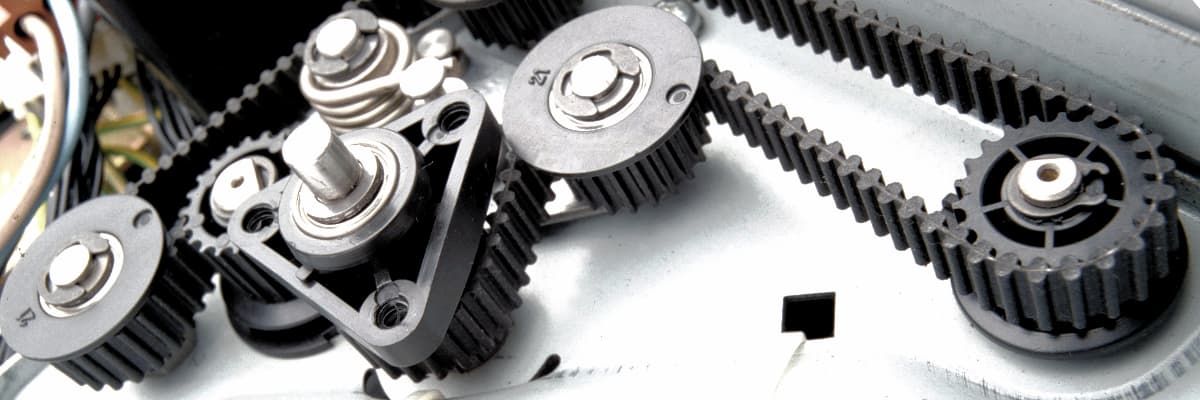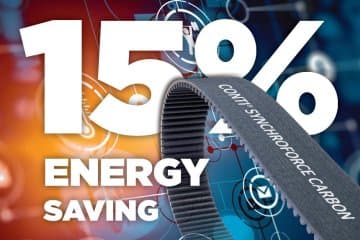Belt Efficiency and Energy Saving
Higher efficiency, energy savings, increased power transmission, longer service life and reduced maintenance costs can be achieved by belt drive optimization. Change of the belt drive can save up to 15% energy.
Belt Drive Efficiency
Efficiency describes the ratio of output power to input power. V-belts suffer from belt and pulley friction, bending, elongation and decreased pretension, resulting in loss of efficiency. V-belts achieve an average efficiency of about 92% due to slippage. The installation efficiency is about 97%. However, in operation, the efficiency of conventional V-belts decreases continuously. Poor and irregularly maintained V-belts work far below 90%.
In contrast, timing belts have substantial advantages. Their consistently constant engagement in teeth allows synchronous movement and prevents slippage. Frictional losses at the tooth sides are small and the elongation losses are also significantly lower than in V-belts. Timing belts are able to operate with an efficiency of 98% to 99%.
Example of Energy Saving
Fan drive 30 kW, 1500 rpm, continuous operation 7 200 operating hours per year, maintenance check and tensioning twice a year.
More than 15% energy saving can be achieved by converting from standard CONTI-V SPB 2360 Ld V-belts to CONTI SYNCHROCHAIN CTD 2100-C14M-37 timing belts.
In practice, this was equivalent to an energy saving of € 2,390 per year.
Energy Saving and Reduced Maintenance Costs
Belt drives are one of the main areas where higher energy efficiency of machines can be achieved. Research shows that, notwithstanding maintenance, timing belts have an average efficiency up to 6% higher than V-belts.
Optimizing the mechanical system allows for great energy-saving opportunities
V-belt efficiency is significantly reduced due to insufficient pretension.
Regarding V-belts, there is a big difference whether the belt is new, used or worn. Conventional V-belts elongate and lose preload during operation. If the preload is insufficient, the V-belt efficiency decreases by 10 to 15%. Poor and irregularly maintained V-belts work far below 90%. Timing belts are able to work with practically the same efficiency throughout the operation period. Optimizing or changing the drive allows considerable energy savings.
Product Range of Energy-Saving Belts
CONTI-V FO PIONEER XPZ, XPA, XPB and XPC V-Belts
Change from classic V-belts to narrow V-belts for highest performance and speed according to DIN 7753.
- Higher power transmission
Higher rigidity and low elongation - Maintenance-free belts
It is not necessary to retension the belts during operation.
CONTI SYNCHROCHAIN CARBON, CONTI SYNCHROFORCE or CONTI SILENTSYNC Timing Belts
By simply changing the V-belt transmission to the timing belt transmission, savings of between 3 and 8% can be achieved.
- Maximum efficiency, increased performance, reduced bearing stress
These and other benefits will be gained by further drive optimization. - Fans, pumps or presses
Typical examples of changing the drive to timing belts. And of course many other machines.



